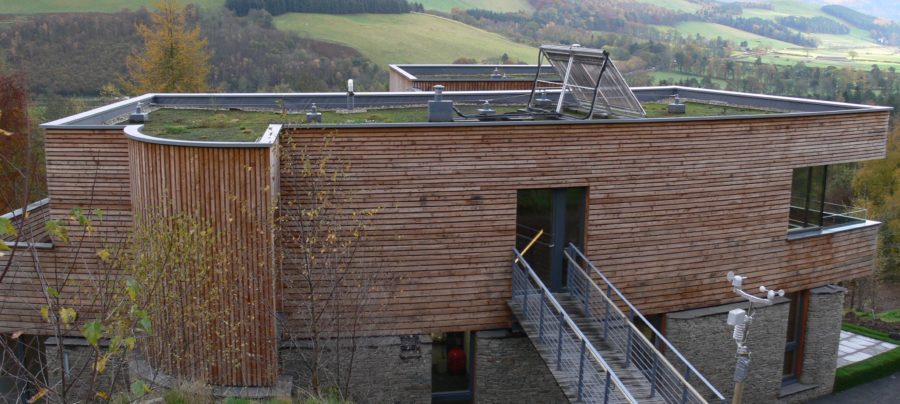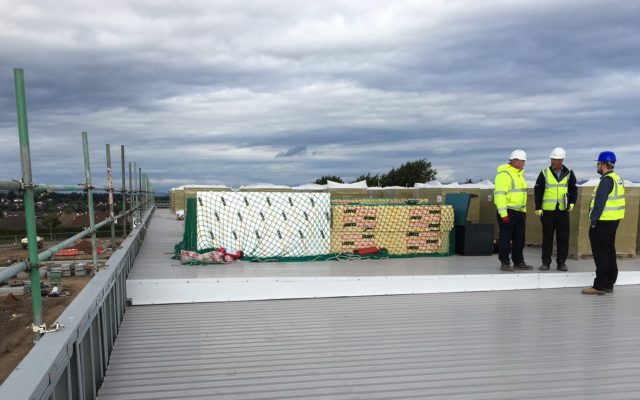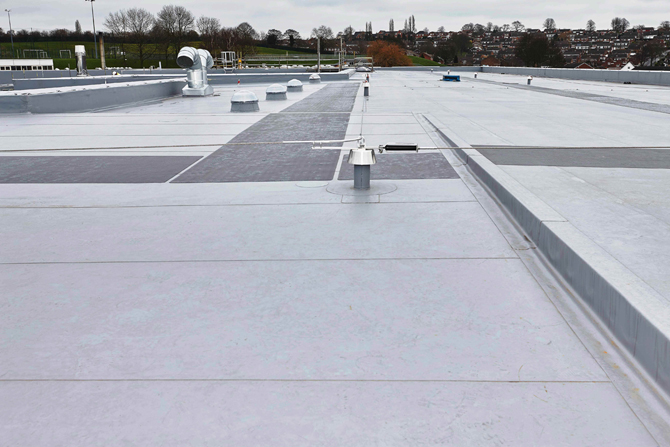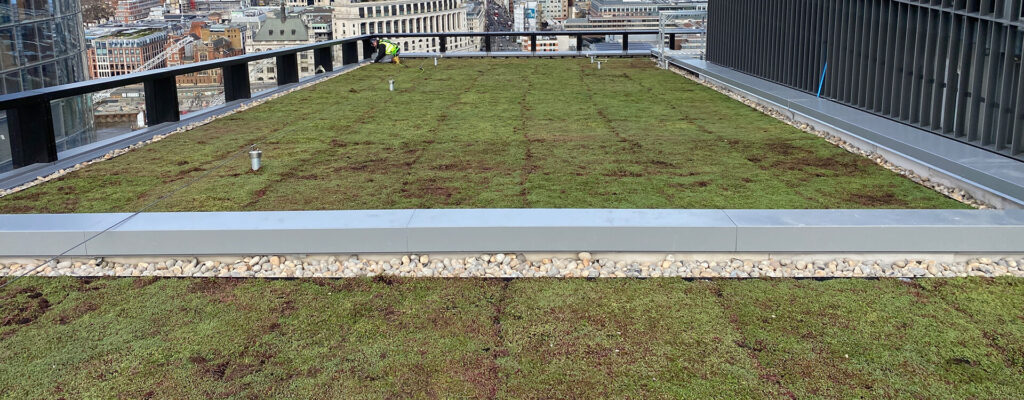Flat roofs have been a very popular choice for specifiers for various reasons including cost, aesthetic appeal and functionality.
They are often seen as the simple option, however, so many things need to be considered to achieve a long lasting system that is fit for purpose. To begin with, there are various different waterproofing systems available that can potentially be used on flat roofs. So how does the specifier decide which system works best for their project?

IKO Spectraplan SG membrane on a private dwelling in Scottish borders
Here are the most important things to consider when designing flat roofs
There are many different types of roof build-ups such as warm, cold and inverted roofs and each roof build up has different layers within them. Rather than looking at the individual elements of the roof, specifiers should consider the system as a whole first and concentrate on the key project criteria. Does the roof need plant equipment on it? How much weight can it carry? Will it need public access (i.e. smoking area for the office employees)? Answering these questions can normally narrow down the options for the right roofing system.
Early engagement with the roofing expert is the key to success. It is important to discuss how the roof will interact with the other elements of the building. Based on this information, changing one single element of the specification can avoid incompatibility issues, condensation problems and insufficient U-values.
In practice, it is always ideal to start the design from the top and work it down towards the bottom layers so the specifier can pay extra attention to the parapet and upstand heights which might cause an issue if they are left after other elements are decided. Problems with low door thresholds and inadequate falls for drainage often occur when these elements are taken into consideration too late in the specification process. Many specifiers aim only to meet the minimum standard of 1 in 80 achieved falls for a flat roof and this doesn’t give them enough room for errors when it comes to building tolerances and mid-span roof deflection.
When upstands heights are specified beyond the minimum standards, this will give enough room for the likely refurbishment and extension projects and the increases in insulation depth without compromising critical junctions around rooflights and other openings.

KO Armourplan P PVC membrane at Arnold Hill Academy in Nottingham by IID Architects
Common mistakes that specifiers make when designing flat roofs
When specifiers move their attention from the bigger picture, this might sometimes have a negative effect on the sequencing of the project stages. For instance, the doorways, rooflights and windows need to be installed after the dressing of roof around openings and reveals. If the order is done the other way around, achieving long lasting waterproofing integrity around these critical junctions might not be possible.
Another thing that needs to be considered is the material storage on the roof. If the materials are going to be stored on the roof during the installation, a bitumen based vapour control layer would provide the most robust solution and avoid any likely damages. Insulation and membrane installation should be delayed until the storage materials are removed off the roof. Once the roof is clear, vapour control layers should be inspected and repaired where necessary before the rest of the roof build-up is installed.

Flat Roof Inspection and Material Storage
This way the extra cost of the temporary roof protection can be avoided whilst the waterproofing layer is protected from any likely damages. Once the waterproofing is installed, it is important to control the access of follow-on-trades.
Things to consider during the installation stage
Full QA and QC procedures should be in place to ensure the roof is properly constructed. Hold points are also important, as they give architects the opportunity to check key elements of the roof design as they are completed. Having some examples of ‘good roofing practice’ images would help the specifiers to identify whether the installation is up to standards.
IKO Polymeric does not sell its products to installers who have not completed Single Ply training courses delivered in their training facility. IKO Polymeric field technicians then support these newly accredited installers by visiting site regularly and giving them technical advice on the complex issues they might be facing.
Advantages and disadvantages of cold and warm roofs
Cold roofs are not as popular in the UK market as they once were due to the need for increased depths to meet U-values and the requirement for adequate through-ventilation. Scottish Building Regulations general do not allow new cold roof designs. In fact, the Single Ply Roofing Association suggests converting any cold roof build ups to warm roof design during refurbishment where possible. Therefore, specifiers mainly have two choices: whether to specify a warm or inverted roof.
On inverted roofs, the waterproofing layer is placed at the base of the roof build-up where it is better protected against any likely damage and UV-degradation. On the downside, in the event of water ingress, the waterproofing layer is a lot more difficult to access compared to a warm roof structure.
A single-ply membrane is often recommended as the best solution for buildings where a light weight system is required. It also provides an ideal solution for large scale flat roofs with a few penetrations as it is simple, economical and quick to install.

IKO Armourplan P Single Ply Flat Roof
IKO Polymeric is part of the IKO Group, one of the leading roofing manufacturers in the UK that supplies a broad range of roofing systems. Therefore, our expert team can offer you un-biased advice on choosing the right roofing system that matches with your project’s key criteria.
Are you working on a roofing project and not sure which roofing system is right for you?
Contact IKO Polymeric’s technical team to start the early engagement and get it right first time!


